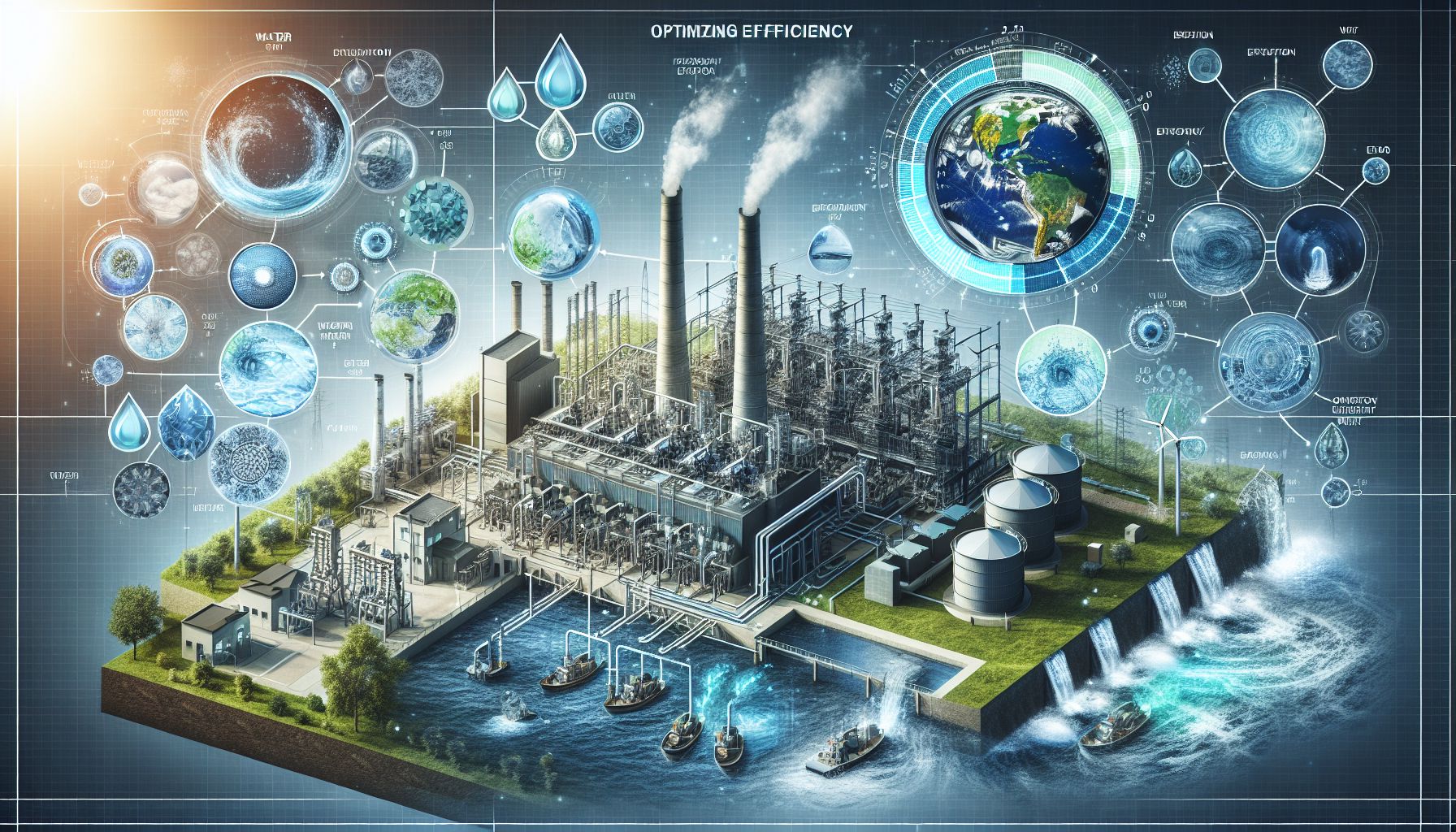Water and energy are two crucial resources that are closely interconnected. The production of energy requires a significant amount of water, while the treatment and distribution of water also require energy. This interdependence between water and energy is known as the water-energy nexus. In order to ensure sustainability and efficiency in both sectors, it is essential to optimize the use of water and energy in power generation.
Importance of Optimizing Water-Energy Nexus
Optimizing the water-energy nexus is essential for several reasons. Firstly, it helps in reducing the overall carbon footprint of power generation. By using water more efficiently in the production of energy, less energy is required, leading to lower greenhouse gas emissions. Secondly, optimizing the water-energy nexus helps in minimizing water consumption and reducing the strain on water resources, especially in regions facing water scarcity. Lastly, it leads to cost savings for power generation companies by improving operational efficiency and reducing water and energy wastage.
Strategies for Optimizing Water-Energy Nexus in Power Generation
There are several strategies that can be implemented to optimize the water-energy nexus in power generation:
-
Use of Water-Efficient Cooling Systems: Power plants typically use large amounts of water for cooling purposes. By implementing water-efficient cooling systems such as dry cooling or hybrid cooling towers, the water consumption of power plants can be significantly reduced.
-
Integration of Renewable Energy Sources: Renewable energy sources such as solar and wind power have minimal water requirements compared to traditional fossil fuel-based power plants. By increasing the share of renewable energy in the power generation mix, the overall water consumption can be reduced.
-
Implementation of Water Reuse and Recycling: Power plants can implement water reuse and recycling systems to minimize freshwater consumption. Wastewater from power generation processes can be treated and reused for cooling or other non-potable purposes.
-
Optimization of Energy Recovery: Implementing energy recovery systems such as heat exchangers can help in maximizing the efficiency of power generation processes. This reduces the overall energy requirements, leading to water and energy savings.
-
Adoption of Smart Grid Technologies: Smart grid technologies enable power generation companies to better manage energy demand and supply, resulting in more efficient use of resources. This can help in reducing water and energy wastage in power generation.
Case Study: Water-Energy Nexus in Thermal Power Plants
Thermal power plants are among the largest consumers of water in the power generation sector. They use water for various purposes such as cooling, steam generation, and pollutant removal. Optimizing the water-energy nexus in thermal power plants is crucial for sustainable operation.
One innovative approach to optimizing the water-energy nexus in thermal power plants is the implementation of advanced cooling technologies. For example, the use of dry cooling systems instead of traditional wet cooling towers can significantly reduce water consumption. Dry cooling systems use air instead of water for cooling, therefore eliminating the need for large quantities of freshwater.
Another strategy is the integration of renewable energy sources in thermal power plants. Hybrid solar thermal power plants combine concentrated solar power technology with traditional fossil fuel-based power generation. This reduces the water and energy requirements of the power plant while also lowering greenhouse gas emissions.
Conclusion
Optimizing the water-energy nexus in power generation is essential for ensuring sustainability, efficiency, and cost-effectiveness. By implementing strategies such as using water-efficient cooling systems, integrating renewable energy sources, implementing water reuse and recycling, optimizing energy recovery, and adopting smart grid technologies, power generation companies can reduce their water and energy footprint while also contributing to environmental conservation. It is crucial for the power generation sector to prioritize the optimization of the water-energy nexus to achieve a more sustainable and resilient energy future.
Sources:
1. Prakash, Kumar, et al. “Water-Energy Nexus: A Comprehensive Review on Water Conservation Measures for Power Plants.” Journal of Water Process Engineering, vol. 42, 2021, https://doi.org/10.1016/j.jwpe.2021.102180.
2. Rao, Pradeep, et al. “Impact of Water-Efficient Cooling Systems on Water-Energy Nexus in Thermal Power Plants.” Energy Procedia, vol. 158, 2019, https://doi.org/10.1016/j.egypro.2019.01.132.
